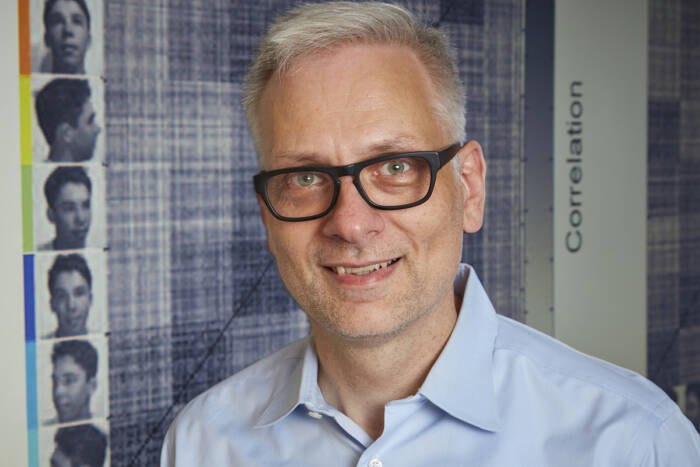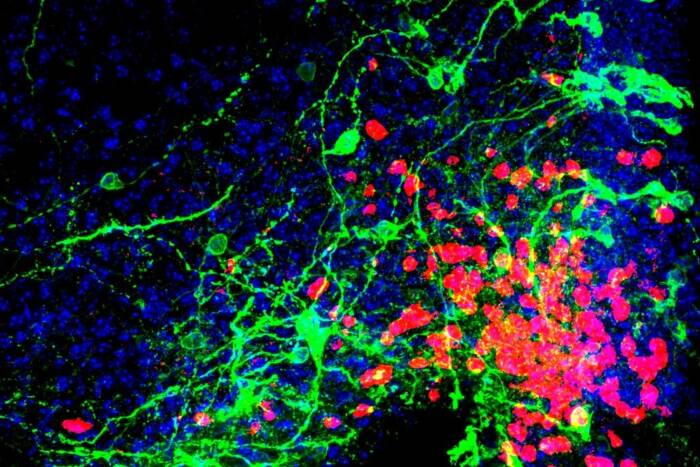Rockefeller University scientist elected fellow of Royal Society
David Gadsby, Ph.D., professor and head of the Laboratory of Cardiac and Membrane Physiology at the Rockefeller University, was elected a fellow of the Royal Society today for his research into how ion transporters function, and specifically for furthering our understanding of the origins of cystic fibrosis.
Each year the Royal Society, through peer review, selects 44 new members to become fellows. 12 men, including the architect Sir Christopher Wren, officially founded the Society in England in 1660. Gadsby will join their ranks by using a quill pen to sign his name in the Society book alongside past and present fellows including Sir Isaac Newton, Charles Darwin and Albert Einstein, as well as Rockefeller’s own Nam-Hai Chua, Ph.D., George Cross, Ph.D., and Paul Nurse, Ph.D. Rockefeller scientists Joshua Lederberg, Ph.D., Torsten Weisel, M.D., James E. Darnell, M.D., and Christian de Duve, M.D., Ph.D., are foreign members of the Royal Society.
When Gadsby first began to look at ion transporters, the prevailing theory was that ion channels, which allows ions to move across the membrane their concentration gradient, and ion pumps, which actively transports ions to create the concentration gradient, were considerably different machines. Through his work, Gadsby demonstrated that the two types of ion transporters are not built so differently after all, which has helped other scientists appreciate the similarities, and fundamental differences, between ion channels and pumps.
Moving ions across the membrane
The movement of ions across the cell membrane underlies many of the human body’s essential functions. Their movement generates the electrical signaling in all nerve cells and in heart and muscle cells. Kidney function and signaling through release of hormones and neurotransmitters are also controlled by ion gradients.
To create a concentration gradient of ions, where a large amount of one ion, like sodium, accumulates on one side of the cell membrane, an ion pump uses energy, often extracted from a molecule called ATP, to drive the ions through the membrane. Ion channels transport the ions across the membrane in the opposite direction, down the gradient. Gadsby recognized that one could not exist without the other – the pumps create the gradients that the channels exploit – and he became interested in whether there is a functional relationship between these two types of ion transporters.
His lab was among the pioneers of new techniques used to study ion pumps, by adapting protocols developed for studying ion channels. The new methodology allows researchers to look at the activity of ion pumps in small patches of membrane. Gadsby and his laboratory colleagues have also recently detailed the presently accepted model for how the opening and closing of the CFTR ion channel, the protein that is mutated in patients with cystic fibrosis, is regulated.
David C. Gadsby
Gadsby was born shortly after World War II in Cardiff, the capital city of Wales. He lived in a small seaside town until he was 12, when his family moved to Cambridge. After attending Trinity College of Cambridge University, where he received a B.A. and an M.A. in physiology and biophysics, Gadsby graduated with a Ph.D. in physiology from University College London in 1978. However, he had actually come to Rockefeller in 1975 to finish his studies, where he continued as a research associate in the laboratory of Paul F. Cranefield, M.D. Gadsby became a tenured professor in 1991 and continues to study how the sodium/potassium ion pump, and the cystic fibrosis-related CFTR ion channel, function.


